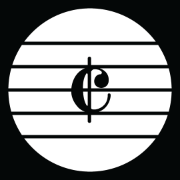Leaderboard
Popular Content
Showing content with the highest reputation on 05/31/2023 in all areas
-
I'm quite busy with non music life so I guess I'll try. Btw I most certainly would not be able to play that Piano part for learning just two years. Then again idk, I learn the Piano from a young age. The elephant in the room is A-flat major isn't really a "violin" key, so to say. That isn't to say you can't write for the violin in A-flat at all, but the extent of chords you are using is choking the violin with this key. One thing that is often neglected is the concept of "overtones", similar to why you would want to use the Piano sustain pedal not for the sustain effect, but for the richer sound. In the key of A-flat the chords seem to add nothing to this. I'm not a violinist so I am not qualified to give you the exact details. But if you have a violinist available you should really ask him/her how to write chords for it, in that case I would actually suggest you remove all the violin chords first, put an asterisk at every moment you want chords, then ask a string player how it could be done. But just in case, let me try to point out some things, all the really big chords (triple+ stops). Please bear in mind the standard tuning of the violin is GDAE. This means the lowest note has to be at least G or above, second lowest note D or above, etc. bar 19. no. you can't harmonic a e-flat on the violin unless you do it artificially bar 99, it's not entirely impossible to play a long note arco then trying to pizz with the left hand, but my question is "why?", the passage does not look or sound very virtuostic, it looks to be it's just there for the sake of it. I also noticed there is barely any slurring of the notes. The violin is supposed to be able to play long lines of melodies with great sweetness, use it!3 points
-
Greetings. It has been a while since I posted something on this forum. So, I want to present a composition of mine, which I started working on in December 2022. However, the piece was finished after a six-month hiatus because I severely lacked inspiration. This Humoresque is a short piece for violin and piano, and I named it "Acciaccatura Study" since the main theme features grace notes in the violin part. As you might know, I rarely write chamber music and do not play the violin, so I may need advice on some aspects of violin part writing, such as bowing, double stopping, and harmonics. Let me know what you think about this piece. For the violinists: are the bow directions comfortable? Also, are the double stops playable on the violin? How about other aspects, such as staccatos and harmonics? Carl Koh Wei Hao P.S. The audio was generated on MuseScore 2.3.2. Acciaccatura Study.mp31 point
-
I wrote this in 15 minutes, and you can definitely tell. I hope you like it though! I tried playing around with some interesting rhythms in this but I hope they don't detract too much from the actual piece. prelude.mp31 point
-
This is a retroactive post: I had sketches for this particular piece dating to mid-2022, and I decided to finish the rest of it by the end of 2022/beginning of 2023. I had just jumped into the world of free avant-garde atonalism (after listening to people like Takemitsu, Nono, Penderecki, Messiaen, Vivier, etc.) from the 60s and 70s, and I was captivated by the soundscapes they managed to paint using the unrestrained sounds they utilised, and the feelings they were somehow able to evoke despite writing music that was inherently musically 'wrong' to begin with. Admittedly, compared to those giants, my little prelude for solo piano does pale in comparison somewhat. I haven't given up on my post-tonality compositional dreams yet: I've had sketches for an Indonesian folk tale set in the style of an avant-garde late 60s atonal opera sitting around for a while now, but I haven't thought about working on those yet because it's hard to notate on software and I've only just gotten acquainted to a lot of extended techniques that one could use on various instruments. I don't know if there'll be very many people who'll enjoy this kind of music on this forum, but I still felt like sharing it anyway because I'm reasonably proud of this work. I find that it is difficult to achieve a balance between randomness and perceived 'harmony', often more so than writing conventional music. Whether you are pleased or repulsed by my work, I hope it's at least somewhat worthwhile and eye-opening (even if you'd rather keep them closed throughout!) 😉1 point
-
notation is not too much of a difficult thing, just move everything up and down and trial and error, a bit tedious but nothing impossible Do you find A-flat major more grandiose because it's more of a "Piano" key, so to say? Many famous piano pieces are in A-flat, such as Chopin's polonaise, Pathetique second movement. Henry's recently posted sonata as well. But if you really want A-flat major to work for the violin you really need to find a violinist to help with the parts, I'm out of ideas on this page. Otherwise you might consider keeping A-flat key but make the Piano part shine more. I guess what I am trying to say is certain instruments lend themselves to certain keys. Most violin concertos are in the key of D, I recently learned. Then again take my words with pinches of salt, I haven't offer a lot of my own pieces here on YC and I'm already ranting lmao1 point
-
1 point
-
Thanks Henry for the encouragement, but I don’t have anything much to offer beyond ABRSM grade 8. Actually are there violinists on this forum? I will write a few more things since I am on transit. I hope the following comments won’t sound too harsh, please note I really enjoyed the grandiosity of your piece! For starters, do you think your work will stand if you just move everything by a semitone up so it becomes A major? A major is a much easier key to work with for violin music. Secondly (sorry it’s about triple+ stops again), triple/quad stops are generally played arpeggiated when bowed (there are options when it comes to pizz), meaning we bow the lower two notes first then tenths of a second later we bow the upper two notes. You can make a case for non-arpeggiated triple stops if the music is fast and loud (e.g. Shostakovich’s sonata for piano and cello second movement), but most certainly not quad stops. The implication is you have to give time for the string player to roll the chords. Anyway, I have a painful suggestion, just remove all the double/triple/quad stops for now, see if eventually you can add a few back later, if at all. There are quite a number of places where I personally think multi stops serve little to no purpose. (hmm🤔 should I ask you to look at my cello solo sonata I wrote years ago on noteflight (lol I lost the logins)? It’s more of an exercise composition piece now that I look back into it and I never actually was able to play it myself, but it’s strings writing nonetheless I guess)1 point
-
Hey @Pano, I think you can have the left hand in a slightly upper position of the keyboard and the right hand in a lower position for playing the RH semiquavers fluently. Henry1 point
-
Hi @Awsumerguy, I think @PCC is definitely qualified to point out those issues! Great job pointing them out! The triple and qradruple stoppings in fact looks scary like @Luis Hernández said. I will rather go safe and cancel out those multiple stops if I'm not sure of them, since I'm not a violinist myself. I here invite our king of waltzes, @David_DLM here! For the piano part, b.70 and all of the semiquaver passages will be really difficult to play due to the fast tempo. B.128-129 and 261-267 are really difficult too, you can look at similar passage in the opening movement of Beethoven's op.111 Piano Sonata. The piece itself is pleasant enough though. Just beware of the playability issue and this will be a great piece. Thanks for sharing! Henry1 point
-
Hi @Awsumerguy, Certainly this is enjoyable music! In fact for me the lack of tonal structure in post tonal music makes it great to present the sudden outbursts in your piece here. I agree with everything @Quinn said. Your control of time is great here with the sudden outbursts and suitable rests, like a recitative. For me this is a short prelude, so I don't mind having less clear thematic structure and coherence here. For me I think so too, that's why I never try writing one. In tonal music you can just follow the standard harmonic progression to develop your music, but in a post tonal one you will have to find one of your own, which makes your piece original but at the same time difficult to compose sometimes. I won't say I deplore it, but that's not my thing to do and I am incapable of composing one in that style! I would like to ask, what do you mean by "with extreme ardour" in b.6 when it's p there? Also why will it be "waltz like" there? Also I feel like some of the accidentals there is unnecessarily difficult, like the C double flat can be Bb in b.12 LH, B double sharp can be C# in b.21 LH, G double flat can be F natural in b.27 RH. You can also add a metronome marking at the beginning and othere places in order to make the tempo clear especially for a modern piece. Of course not! In fact the difference of styles of the posts here is what makes YC a great place. People can immerse in different styles and learn from them. For me I don't find it difficult at all. You can count on him since he has written great post-tonal pieces including this one: Thanks for sharing! Henry1 point
-
An interesting piece. I don't master the violin at all but it is true that there are some scary chords here. The interplay between the two instruments is nice. There are a few moments when the piano plays chords in the lower part of its range that are very poorly defined because the notes are too close together, and in that deep layer it doesn't work well.1 point
-
There are a few harmonies I am not familiar with in the beginning after the intro that I personally find clashing, but maybe that's one me. Something tells me you master the Piano but not the violin family of instruments. The amount of details you put into the lines shows (notwithstanding the unplayability I mentioned). Would you consult a violinist for advice on how to write for the violin? And in my view, the violin family of instruments are primarily melodic instruments, meaning you want them to play a single line most of the time. Chords can be used with great effect but only when the time is right, especially since you have the Piano to back up (unlike solo pieces like Bach's). I just think the amount of chords you gave the violin really distracts from the impressive Piano parts. I think I would really enjoy the piece if I am being less distracted. Thanks for sharing your music!1 point
-
This is a wonderful composition and I feel you've made the best of freedom that atonality allows. You seem to have hit what sounds right for the work and thus presumably for you too. I can't criticise the thematic material - obviously: there are motifs, bar 6 for example, that you use sequentially and I believe their evolution is one factor in why this work is easy to assimilate. You've also rather cleverly used silence a lot. You've allowed time for a listener to take in what's happening - the tempo. the pauses. Perhaps the slow tempo allows enough time for each event to be absorbed - with this style that seems important. I didn't question balance between 'randomness and perceived harmony' so perhaps my absence of comment tells you it worked for me. I did feel that balance in the use of your thematic material was dead on, though, the contrasts in register, tempo; the intrusion of sudden if brief outbursts worked well; above all between single notes and chordal moments, and dynamics. (I'll briefly mention that I too work without keys but it never worries me if I pass through tonal centres - or within the scheme (atonality) landing on a major or minor triad because that's how things want to be at that point. Also for me there's nothing random. Ideas may start randomly but they're usually edited to fit their context in the end.) So to sum up, a piece that's easy to assimilate and a pleasure to listen to. Refreshing. Congrats on the accomplishment. All the best with the next one!1 point
-
Sounds great and definitely fitting of a Western movie! I'm getting "William Tell Overture" vibes, especially with the "1 +a" rhythmic ostinato chugging along in the background.1 point
-
Yee haw! Howdy pardner! Oh my .. don't know where that came from .. Nice job with this western fanfare! There is quite a lot of repetition in this but you don't take it too far. You end it at just the right point - if you had continued past that point it would probably have been advisable to make some kind of big contrasting section in another key (like the lyrical love theme from Superman for example). What you have is essentially a masculine theme - but now it's just screaming out for a contrasting feminine theme. But that might just be my personal preference. Besides that your track was ace-high! Thanks for sharing!1 point






.thumb.png.8b5b433a341551e913a34392660bc95b.png)